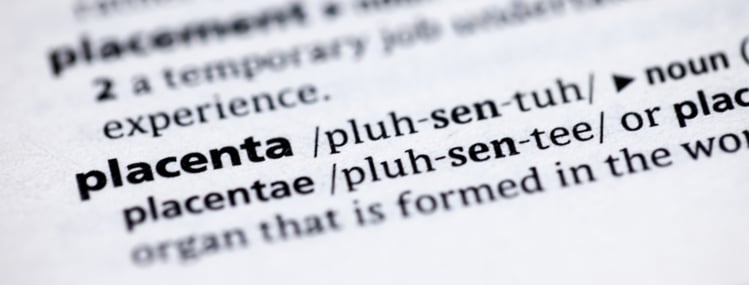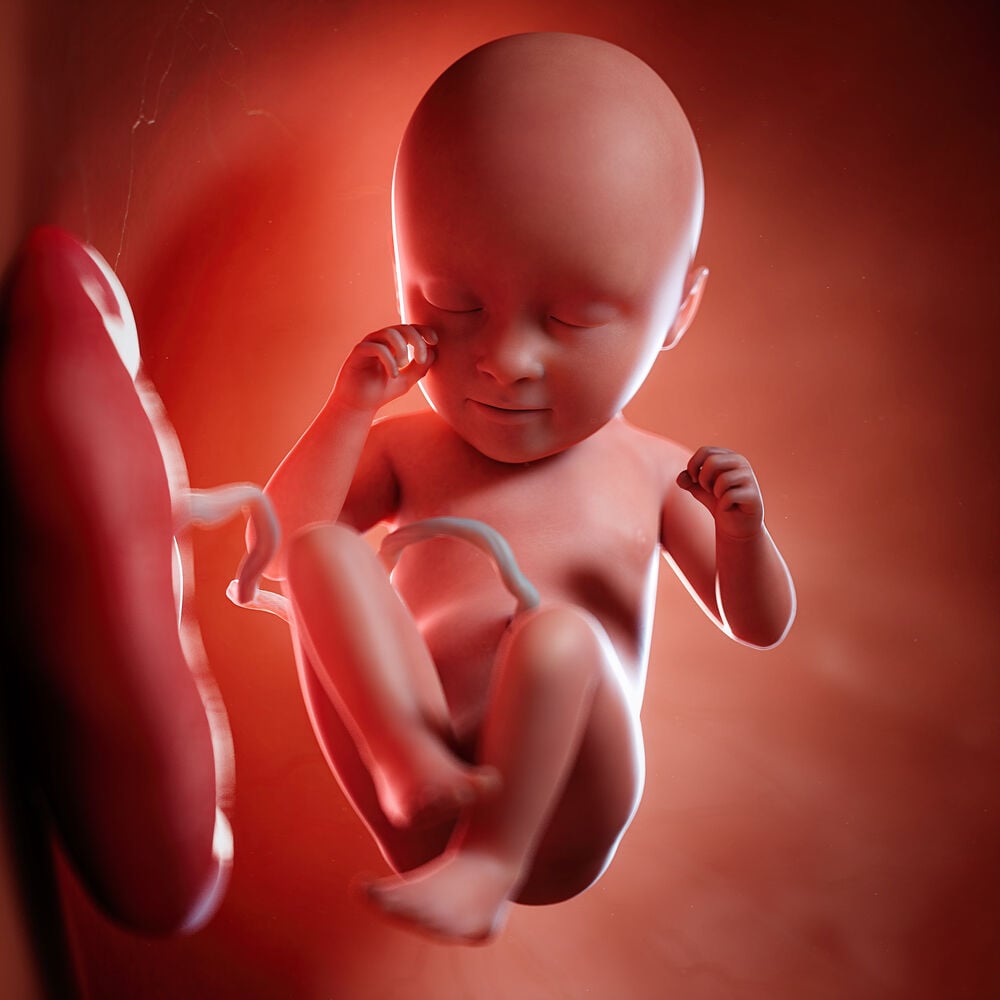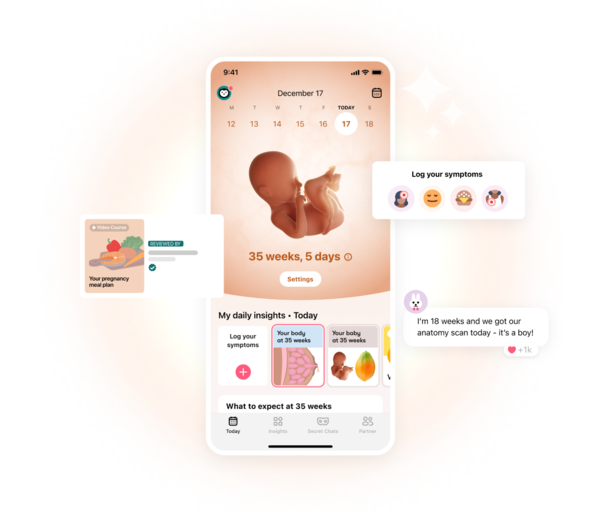Throughout pregnancy, your body goes through fascinating changes to create the perfect environment for a baby to grow. One change is the formation of a fundamentally new organ — the placenta. But what is the placenta, when does the placenta form, and why is it important for you and your baby? Let’s find the answers.
-
Tracking cycle
-
Getting pregnant
-
Pregnancy
-
Help Center
-
Flo for Partners
-
Anonymous Mode
-
Flo app reviews
-
Flo Premium New
-
Secret Chats New
-
Symptom Checker New
-
Your cycle
-
Health 360°
-
Getting pregnant
-
Pregnancy
-
Being a mom
-
LGBTQ+
-
Quizzes
-
Ovulation calculator
-
hCG calculator
-
Pregnancy test calculator
-
Menstrual cycle calculator
-
Period calculator
-
Implantation calculator
-
Pregnancy weeks to months calculator
-
Pregnancy due date calculator
-
IVF and FET due date calculator
-
Due date calculator by ultrasound
-
Medical Affairs
-
Science & Research
-
Pass It On Project New
-
Privacy Portal
-
Press Center
-
Flo Accuracy
-
Careers
-
Contact Us
What Is a Placenta? Flo’s Guide


Every piece of content at Flo Health adheres to the highest editorial standards for language, style, and medical accuracy. To learn what we do to deliver the best health and lifestyle insights to you, check out our content review principles.
What does the placenta do?
The placenta forms a crucial connection between a fetus and the mother. Throughout the pregnancy, it supports all the biological functions that fetuses can’t do for themselves yet. After attaching to the uterine wall, the placenta connects to the growing fetus via the umbilical cord. Here are the functions of the placenta:
- Supplies nutrients and oxygen – The placenta delivers nutrients, supplies oxygen, and transfers carbon dioxide from the baby to the mother’s blood supply.
- Provides maternal hormones – Certain regulators such as thyroid hormones are necessary for the baby’s growth and development before their thyroid begins to function.
- Eliminates waste – Waste produced by the fetus, such as urea, uric acid, and bilirubin, is absorbed into the mother’s blood via the placenta through a process called diffusion.
- Produces pregnancy hormones – The placenta produces many hormones throughout pregnancy, each of which plays an important role in supporting your pregnancy.
– Human chorionic gonadotropin (hCG) maintains the corpus luteum — an important temporary gland in the ovaries, which produces progesterone until the placenta takes over. If you don’t become pregnant, this structure sheds every month a few days after ovulation, causing menstruation. If you do become pregnant, the hCG produced by the placenta tells the corpus luteum to sustain the pregnancy, maintain the uterine lining, release hormones, and more. This is why hCG is the hormone detected by pregnancy test kits.
– Progesterone supports the implantation of the fetus and creates a rich uterine lining of blood vessels to provide nutrition to the baby. It also keeps the uterine muscles relaxed, which helps maintain pregnancy.
– Estrogen promotes breast and milk duct development in a pregnant person. It promotes metabolic changes during pregnancy, influences insulin level, and reduces appetite.
– Human placental lactogen (hPL) stimulates the fetus’s growth and development. It promotes breast development and prepares for lactation.
- Provides immunity – The body’s infection-fighting antibodies, called immunoglobulins (mostly IgA and IgG), can pass to the fetus through the placenta. Antibodies protect against infections while the fetal immune system develops. Because the concentration of maternal antibodies peaks by the time of delivery, term babies are less prone to infections than premature babies. Parental antibodies also protect the baby for around three months after delivery.
- Filters out microorganisms – The placenta creates a barrier between the mother and the fetus. Although the placenta can filter some infectious agents, it is not a perfect barrier. That’s why health care providers tell pregnant people to avoid possible sources of infection and toxins (e.g., nicotine, alcohol, and drugs).
- Regulates the baby’s body temperature
When does the placenta form?
About 10 days after conception, as soon as the fertilized egg implants in the uterus, the chorion forms. The chorion is an embryonic organ that precedes the placenta’s development.
The placenta fully develops by weeks 18–20 of pregnancy, but it continues to provide the baby with oxygen, nutrition, and immunity. The mother’s blood supply is fully connected to the developing placenta by week 14 of pregnancy.
The anatomy of the placenta consists of two components:
- Maternal placenta – this part of the placenta develops from the mother’s uterine tissue at around 7–12 days after conception.
- Fetal placenta – this piece forms when the outer cells of the blastocyst (the earliest form of the embryo) divide and burrow deep into the uterus to connect to the mother’s blood supply. It starts forming 17–22 days after conception.

When does the placenta take over?
At the beginning of pregnancy, a group of ovarian cells called the corpus luteum produces estrogen and progesterone. However, once the placenta becomes fully developed at 18–20 weeks, it can take over the production of these hormones, and the corpus luteum dissolves. Many people experience reduced morning sickness and more energy once the placenta takes over, usually in the second trimester.
Take a quiz
Find out what you can do with our Health Assistant
Types of placenta placement
The placenta attaches and develops wherever the fertilized egg implants in the uterus. The placement of the placenta can vary, but here are a few of the more common positions:
- Posterior placenta – In this case, the placenta grows at the back of the uterus wall, where the fertilized egg is attached.
- Anterior placenta – This is when the placenta attaches to the front wall of the uterus, and the fetus grows behind it.
- Fundal placenta – This happens when the placenta grows on the top wall of your uterus.
- Left/right lateral placenta – This is when the placenta attaches to the left or right wall, respectively.
There are some rarer, abnormal positions of attachment:
- Placenta praevia – In this case (one in 200 to 250 pregnancies), the placenta attaches toward the lower end of the uterus, either partially or fully covering your cervix. It’s more common in early pregnancy and might resolve as the uterus grows larger. It can cause severe vaginal bleeding during pregnancy or labor due to a condition called placenta previa. Your health care provider will help you determine what to do next if you have a low-lying placenta.
- Placenta accreta – This is when all or part of the placenta attaches to the underlying uterine wall. It occurs in 1 in 2,500 pregnancies.
- Placenta increta – This is a type of placenta accreta that accounts for 17% of cases. It happens when the placenta extends into the myometrium, the muscular layer of the uterus.
- Placenta percreta – This occurs when the placenta pushes through the myometrium and serosa and potentially disrupts adjacent organs. It’s also a kind of placenta accreta, and it accounts for five to seven percent of cases.
The placenta can shift positions as the pregnancy progresses, moving upward into the womb as the baby descends lower.
Summary
Throughout your pregnancy, the placenta plays a crucial role in making sure that the baby grows healthily. Supplying nutrition and oxygen, transferring waste, producing necessary hormones, protecting against infections — the placenta does it all.
The body usually sheds the placenta shortly after birth. During a vaginal delivery, the placenta is also delivered through the vagina. For cesarean delivery, the surgeon will remove the placenta during the procedure. In rare cases, some of the placenta may be retained, requiring urgent intervention. Your health care provider will help you monitor the position and health of your placenta.


Hey, I'm Anique
I started using Flo app to track my period and ovulation because we wanted to have a baby.


The Flo app helped me learn about my body and spot ovulation signs during our conception journey.


I vividly
remember the day
that we switched
Flo into
Pregnancy Mode — it was
such a special
moment.
Real stories, real results
Learn how the Flo app became an amazing cheerleader for us on our conception journey.
References
History of updates
Current version (11 March 2021)
Published (11 March 2019)
In this article

Get your personal guide to pregnancy with the Flo app
-
Follow your baby's growth week by week
-
Get expert info on symptoms, safe foods, and more
-
Chat with other parents-to-be




